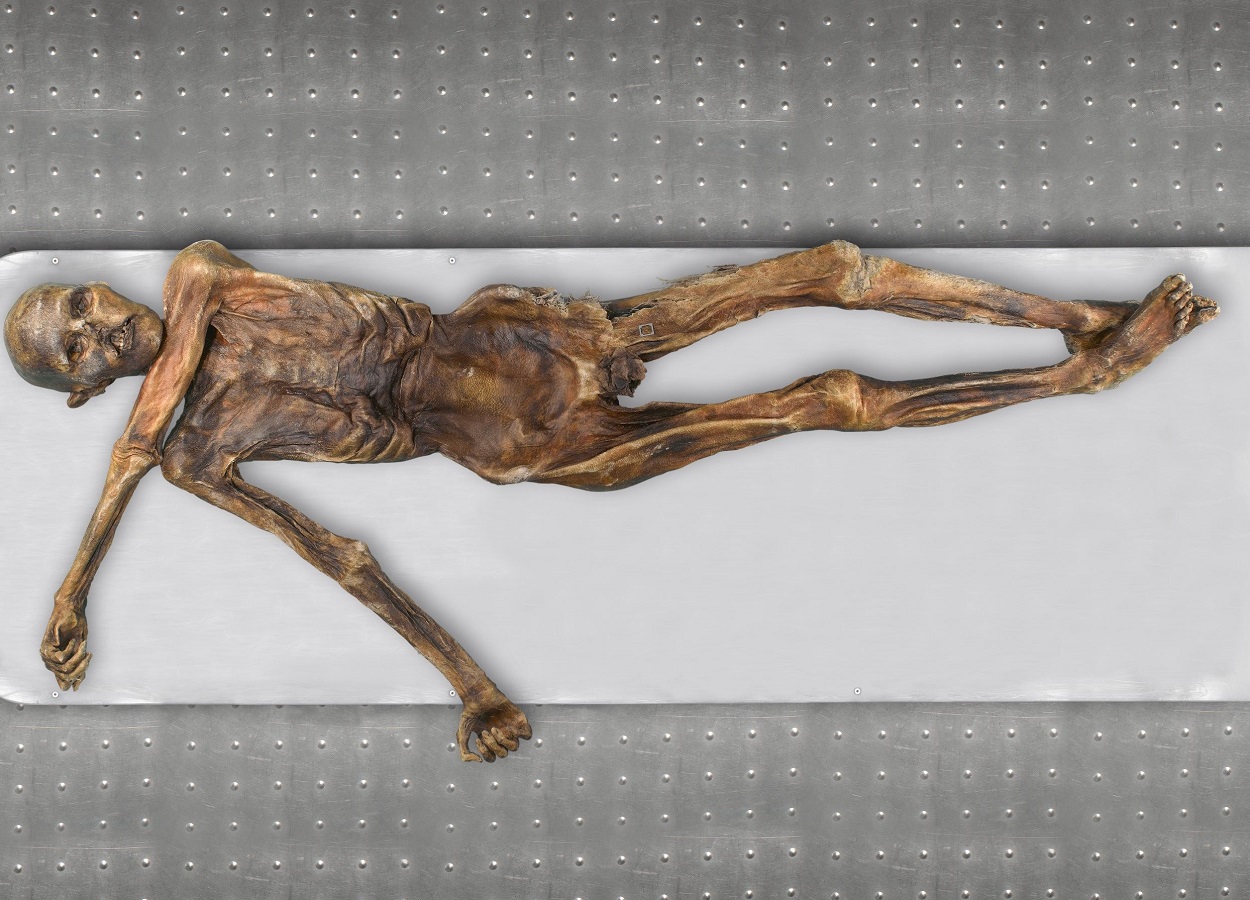Ötzi, also known as the Iceman, is a naturally mummified human who lived between 3350 and 3105 BC.
Ötzi was discovered in 1991 by German tourists in the Ötztal Alps (hence earning the moniker “Ötzi”). His remains stand as the earliest naturally mummified human discovered in Europe, providing unique insights into the lives of Chalcolithic (Copper Age) communities on the continent.
In 2001, X-rays and a CT scan revealed that Ötzi had an arrowhead lodged in his left shoulder, prompting the suggestion that Ötzi was murdered and died of blood loss and from other wounds. However, the nature of his life and the circumstances of his death are the subject of much investigation and ongoing speculation.
In a recent study published in the journal Cell Genomics, researchers have generated a high-coverage genome to learn more about Ötzi’s genetic history, revealing that he had dark skin, dark eyes, and a balding head.
“The genome analysis revealed phenotypic traits such as high skin pigmentation, dark eye colour, and male pattern baldness that are in stark contrast to the previous reconstructions that show a light skinned, light eyed, and quite hairy male,” said Johannes Krause from the Max Planck Institute for Evolutionary Anthropology, Germany. “The mummy itself, however, is dark and has no hair.”
The findings also indicate that the Ötzi’s appearance closely resembled his current mummified state. Additionally, a more comprehensive and refined genome analysis highlights that Ötzi possessed a remarkably elevated proportion of early Anatolian farmer ancestry, surpassing that of any other concurrent European population during the 4th millennium BC. This revelation implies that Ötzi was a member of a relatively secluded Alpine community, characterised by limited genetic exchange with hunter-gatherer societies.
“The most surprising results were the presence of male-pattern-baldness-related alleles supporting the absence of hair observed on the actual mummy and the rather dark skin pigmentation that is also supported by the mummy,” said Albert Zink of the Eurac Research – Institute for Mummy Studies in Bolzano, Italy.
http://dx.doi.org/10.1016/j.xgen.2023.100377
Header Image Credit : EURC – Marco Samadelli-Gregor





